Electrical books and guides
Electrical engineering is a field of engineering that generally deals with the study and application of electricity, electronics and electromagnetism. Many companies and industry experts has been releasing technical books and guides in order to spread their knowledge, so they are all here, presented for you.
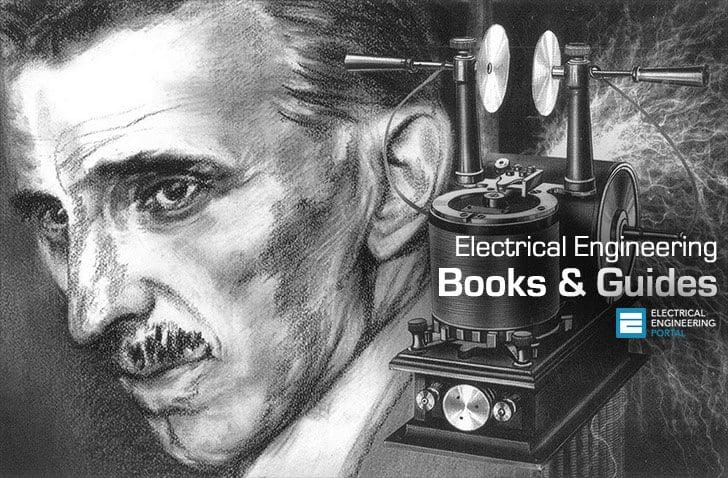
Introduction to energy generation
Prior to the discovery of Faraday’s Laws of electromagnetic discussion, electrical power was available from batteries with limited voltage and current levels. Although complicated in construction, D.C. generators were developed first to generate power in bulk.
However, due to limitation of the D.C. machine to generate voltage beyond few hundred volts, it was not economical to transmit large amount of power over a long distance. For a given amount of power, the current magnitude (I = P/V), hence section of the copper conductor will be large.
In later half of eighties, in nineteenth century, it was proposed to have a power system with 3-phase, 50 Hz A.C generation, transmission and distribution networks.
Once A.C. system was adopted, transmission of large power (MW) at higher transmission voltage become a reality by using transformers. Level of voltage could be changed virtually to any other desired level with transformers – which was hitherto impossible with D.C system.
Browse guides and papers
Note that not all documents in this section are free to download. Navigate through sub-pages to discover all documents.




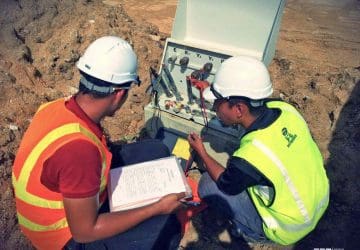

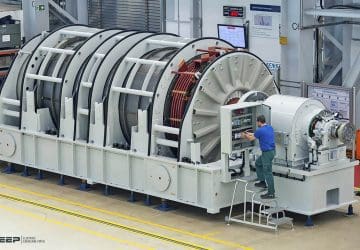
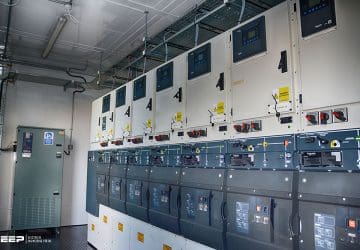
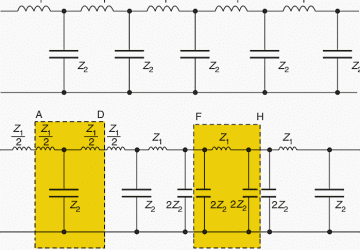

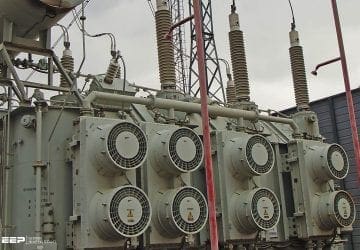

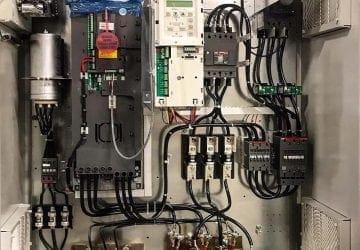




it’s really helpful for me.
It’s really helpful,keep up with the good work
I really appreciate for giving me this chance to advance my career by studying this program with the professionals like you, its really a dream come. Thanks in advance.
ITS GOOD
it is very useful
All good
Do you have article specificially about point on waves switching?
it’s so useful for me and my team. please keep sharing your best article
Hello,
Could you give me an idea how to wire two three phase air compressors from one sours?
Only one compressor will run another is back up for emergency.
And there will be a selector switch. Comp #1 & comp #2
Thank you!
Tony
Thanks for providing us with free articles, it is really helping me a lot to improve my skill in electrical field.
I want to upload some articles in EEP portal, but not been able to find a way. Please extend your help
Your article Awesome Thanks for this information, very informative as well as Modern.
Intrestive and educative want to learn and be a member
I would like to thank you all for all this serious and helpful information
Hello!
Do you have any vocabulary for technical electric, devices?
Thank you
how do i register?
How to regist and pay fees
Hi,
Can you please upload some useful stuff related to Electrical wiring harness and Electrical vehicle as well.
Thanks
I would like to know about low voltage distibution and protection system
thumbs up
Thanks a lot for your free service(providing free download).
God bless you.
Your website helping me/non electrical background persons lot.
You’re welcome Ali, and thank you for the kind words.
Hello to everybody. I want to find a good textbook in English on Power Elecrical Systems for industrial enterprises, the design of power supply systems of industrial enterprises like Boeing, General Motors, Ford, VW, etc. I found some textbooks in Russian (Dr. Konyukhova, Moscow Power Energetic University) but I wish to have textbooks on the same topic by American authors. Who can be recommended?
seriously you are a great man .
, thank you very much.
great work seriously , thank you very much.
Thank you very much Abhishek.
Hi Edvard,
In street lighting design /or installation? Is the STREET LIGHTING POLE need to be bonded direct to earth for each Pole? is there any specific reference standard?
please.. provide if there is
I am looking for sample drawings for Power & Control circuits for a 75kW Soft Starter including PLCs, HMI, Utrasonic level sensors, Utrasonic flow sensors, drive-end and non-drive-end bearing sensors, termistors and associated relays suitable for a Water Pumping Solution
Dear All,
I am facing a problem, we have a single 9R32 Wartsila engine and loeri somer alternator. ABB Unitrol 1000-15 A AVR. the generator produces 5.5 kV and then a step up transformer make this 11kv and then step down transformer. the generator trips at overvoltage first stage at 112% at any load during operation.
Checked following;
IR for alternator { main stator, main rotor, exciter stator, exciter rotor}
Diode testing cold and with 24 VDC
PT IR testing secondary circuit
resistance with ground
MCBs replaced
The star point of the secondary circuit and its grounding.
the resistance of earting pits
verified full excitation circuit.
Everything found normal
Could anybody help or give an idea or they faced this problem, please respond.
Regards
please check the varistor if its found okay then tightening the diode and other equipment…..Good Luck
EEP website is doing a wonderful job of providing informative articles to practicing engineers.It is a great effort to keep it going.
Many Many thanks ,CS Nambisan
This is really useful, thank you team.
I NEED A LITERATURE HOW TO FIND FAULTS AND TROUBLE SHOOTING IN MEDIUM VOLTAGE CABLES.THERE IS A VAN TESTED WITH INSTRUMENTS TO CHECK AND LOCATE THE FAULTS IN MEDIUM VOLTAGE CABLES.WHAT IS HOT POT TESTS.
Hello ,
I already had a request to choose a cylindrical insulator, with the help of your website I made the choice.
Thank you.
Hello
I need guidance to select the cylindrical insulator for the switchgear.
(Selection with the formula and IEC standard)
can you help my?
Thank you
[email protected]
first of all i want to say thanks for such a nice site
after that I need an excel calculation sheet for street lighting and park lighting
thanks
Dear Sir/Madam
Please kindly help me to get IEC standard for my reference. I am looking long time to download for this , but till now i can’t get it.
Has anyone have excel software to determine Earth Fault on the network , how different is it to Fault level calc’s
Hello every one,
Q-1: (a) Can some one provide an example of a “T-Connection” from 220 kV to 220 kV transmission line without any normal/required protection equipment and controls?
(b) What danger this type of connection poses to the TL and all connected the Substations?
Q-2: Is there a British Electrical Code gives examption from installing Automatic Fire Protection System? Reference please.
Thank you,
Yogin
Dear Sir
i need to know if there are any international stander for the % of spare line “fully equiped with CB” should be kept inside each switchgear ,switchboard and distribution board?
also the % of space line ” free of devices” should be kept inside each switchgear ,switchboard and distribution board?
Good post. I am very interested in electrical repairing work and that is why I like to read blogs about electrical work. Keep updating more and also write more on other topics. Because I love this field I do ac servicing work.
I would like to know about the Direct Current Motor Starter Design. How do you design the start resistance and the number of them?
Thank you very much in advance.
Congratulations for your portal (EEP)
Dear sir,
we have to make contact of switch upto 150A how to select the cross section area for rated current 150A
Thanks for the wonderful tips. We are into home appliance service and blogs like these are very helpful to us. Keep writing more.
Thank you so much for your efforts, this website is very useful
Is it possible to download all documents at once ?
Regards
This is the best web site ever for basics of electrical engineering!!
I have a 150 KVA generator. It suddenly developed a malfunction recently. When it is switched on, it runs for about 30 seconds and then goes off. It is electronically switched on or off.
Dear EE Portal,
Thanks for having such informative website.I am looking for quite long about Electricity metering sp[specifically define kwh meter, var and var hour meter and smart meter.
If their is any book regarding metering please send me on [email protected]
hello sir,
Please clear my confusion. While calculating load currents for sizing the cables, which P.F.should be used?? Old or new after compensation..? and also i heard that reduced cable size depends on the type of compensation.i.e. global, sector or individual…please explain.
Hello,
If you are talking about XLPE cables, then the power factor to be selected as per the load type. If it is residential, then you can go to 0.8 or below ; if it is commercial/ industrial you have to go to 0.9 or unity (If full motor/ pump loads).
You can select/ alter the PF as per the local authority approvals only.
For Fire pumps, large motors & AC units(with motor) always consider starting current as 1.5 times the normal load as standard to size the MCCB/ Isolator rating & then select the cable size accordingly.
regards,
Abhiram Ajay
Dubai
plz upload any book for practical thinghs mean to say book only linked how to use thinghs pratically which enhance our innovation skills
I like working on electronics very much. And that is why I have chosen the field of computers and printers. Good post. Keep updating more.
Dear sir,
I always learning with EEP, the best site for electrical,
Sir I want to DOE fundamental of electrical science vol. 2 of 4, hear in site I just see vol. 1 of 4,
So please can you add in hear. ?
Can you please explain the function of Load Bank?
How can we size the Load Bank?
How can we upload a video on your this site?
hi,
thank you very much
hi,
can i get help you for the procedure.
Dear sir, I AM A REGULAR READER FOR THIS SITE. I AM A RETIRED ELEC ENGINEERING FROM .DEPt OF SPACE, ISRO IN INDIA.I AM SHARING THIS SITE CONTENT WITH MY FRIENDS IN ISRO.
IT IS WELL RECEIVED BY THEM & APPRECIATED BY THEM. AS SUCH I DO NOT HAVE A PAYPAL ACCOUNT. I AM INITIATING ONE &SHORTLY I WOULD LIKE TO MAKE A DONATION TO THE GOOD CAUSE FOR THE ELECTRICAL ENGINEERS (AND FOR THE SUBJECT) BY YOUR INITIATIVE . REGARDS.
Can i get help for the procedure for Calculating Three-phase fault current for symmetrical/unsymmetrical systems
I am very pleased to know the difference between symmetrical three phase system and balanced three phase system. Please let me know symmetrical systems and balanced systems.
Rgds
Thank you
Hello Engineering Portal Team.
Congratulations for this wonderful site.
I have found exactly what I needed.
Sory I can not donate at this moment, But this
Engineering portal really deserve a donation just
as many other wonderful sites on the WEB.
please dont give up our portal. Keep on.
Great Thanks to you all.
I want to know about the current and voltage role in human body killing (death and electric shuck). I studied many articless/books about it but some are saying current kill people while some are stating voltage. In my opinion it is frequency as in our country frequency is 50Hz and voltage is 220 P-P. It usually kill people while electrocuted. In the country I am working the frequency is 60Hz and the voltage is same 220 P-P and I did not hear that some one electrocuted and died.
As we go down in reducing frequency the system is going to DC nature which is more danger than AC.
Please explain so that I can make clear my concept.
Good work
I am electrical engineering student , and i want to know more about power transformers.Thank you for the good job.
Good day, first of all i would like to congratulate all of you for such an amazing portal. Contributions are great and i feel like i can keep learning each day a little bit more. I do have one request to make, if possible. I am currently working my thesis and i am interested in power quality for a call center building; specifically i am looking for information about the IEEE.Std. 1100. If you could share something it would be great. Greetings and keep up the great job!!!
can u Upload some article about Selectivity for DC Auxiliare low voltage?
Excellent. Keep it up.
Good
Can you upload some article with respect haradous area classification as per IEC 60079. Easy to understand.
Hi sir..
I am having confusion in selection of alternate motor against the installed one.Here i will give the details of installed & alternate motor which i decided for procurement.
Installed 3 phase Squirrel cage IM:
Supply Voltage=415v; P=22Kw; Rated Torque=131.7Nm; speed=1468rpm; Frame Size=180L; Rated Current=37.2A(VFD duty Motor); NDE bearings=6210 ZC3 ;DE bearings=6210 ZC3; Cooling Method=IC416 ;
Proposed 3 phase Squirrel cage IM:
Supply Voltage=415v; P=22Kw; Rated Torque=143Nm; speed=1473rpm; Frame Size=180L; Rated Current=38A; NDE bearings=6310 ZC3 ;DE bearings=6310 ZC3; Cooling Method=IC411 ;
Kindly suggest me to procure the proposed one or not and request you to give the detailed articles regarding selection of different motors with known motor.
Hey guys. I need help on developing a distance relay in Matlab/Simulink. Can anyone perhaps assist me?
Hi Sir,
I’d like to know more about earthing transformers and neutral grounding resistors, their applications and why they are required. You have any information on this that can be useful for my project?
Any of the trafo needs to be grounded that is 2 earth pit of neutral earthing & 2 earth pit of body earthing.
& neutral grounding resistor(NGR) panels are provided in HT DG panels
Hi Sir,
i would like to know how to choose correct capacitor for run or start motor and can i use large or small capacitor than the existing one for motor
hi
its really very useful
can u help me in my project tat is gsm based power sharing of transformer with automatic load shedding system. can u give me detailed information about this.
I want to know more about how to read and solve a fault on electrical diagram.
Thank you for the very useful information.
Hello sir! i feel difficult to understand some concepts of Elec.engg like vector fields in electroagnetic theory,and finding hard to apply in problems,so my request is please make arrangements as these concepts are very important for an Elec.engg students.and also it will be useful for other students.
I am waiting for your answer
i am actually working on my project titled electrical design for an office building. I would like to know the recent technology available for cable laying and other safety equipments,
Thank You Very Much for this vast collection of resources.
It’s Very helpful to EE students and licensure exam takers.
Hello Sir
I am very much thank ful to you for your information.I hope others also gain knowledge from this.Thank u sir.
You are the best Edvard!
Thanks ESSA, very kind of you!
THANKS VERY MUCH, YOUR WEBSITE WILL BE MY HOME PAGE
Thank you! Very kind of you!
I want to know how the master switch wired, hoping your response …
Thank you very much.
Thank you all!!
Your great and hard efforts too much appreciated .
I would like to thank you all for all this serious and helpful information
Thank you very much.
Great work, thank you very much!
thank you very much to guiv me information about electrical engineering, soon i im going to ask about substation equipment testen , like hipot test
and grounding test